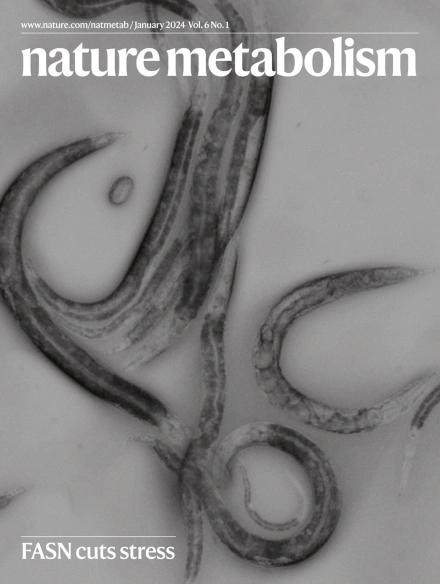多组学分析揭示代谢功能障碍相关脂肪变性肝病的跨王国肠道生态失调
IF 20.8
1区 医学
Q1 ENDOCRINOLOGY & METABOLISM
引用次数: 0
摘要
代谢功能障碍相关脂肪变性肝病(MASLD)是一种与肥胖和代谢综合征相关的常见疾病,但其跨王国关系尚未得到充分研究。我们对211例MASLD患者和502名女性护士进行了高分辨率的多组学分析,包括粪便元基因组、元转录组和代谢组。在这里,我们发现MASLD与66种肠道细菌种类的变化有关,包括口腔典型微生物的广泛富集,以及不仅涉及细菌和病毒分类群的跨界生态失调。链球菌在非瘦型与瘦型MASLD中更为丰富,后者是一种典型的与肥胖增加相关的疾病的矛盾亚型。这些微生物变化与转录物和代谢物的变化相对应,包括多胺和酰基肉碱的增加和次级胆汁酸的减少。我们强调肠道病毒在MASLD中的扰动,表明针对口腔典型细菌的噬菌体的扩张与肠道中细菌宿主的扩张相对应。我们为理解MASLD提供了一个全面的资源,并强调跨王国多组微生物转移是其病原发生的潜在贡献者。本文章由计算机程序翻译,如有差异,请以英文原文为准。


Multi-omic analysis reveals transkingdom gut dysbiosis in metabolic dysfunction-associated steatotic liver disease
Metabolic dysfunction-associated steatotic liver disease (MASLD) is a common condition linked to obesity and the metabolic syndrome, yet its transkingdom connections have been under-investigated. We performed high-resolution multi-omic profiling—including stool metagenomes, metatranscriptomes and metabolomes—in 211 MASLD cases and 502 controls from a cohort of female nurses. Here we show that MASLD is associated with shifts in 66 gut bacterial species, including widespread enrichment of oral-typical microbes, and transkingdom dysbiosis involving not only bacterial but also viral taxa. Streptococcus spp. are more abundant in non-lean versus lean MASLD, the latter being a paradoxical subtype of a disease typically associated with increased adiposity. These microbial changes correspond with shifts in transcripts and metabolites, including increases in polyamines and acylcarnitines and reductions in secondary bile acids. We highlight gut viral perturbations in MASLD, showing that expansions of bacteriophage targeting oral-typical bacteria correspond to expansions of their bacterial hosts in the gut. We provide a comprehensive resource for understanding MASLD and highlight transkingdom multi-omic microbial shifts as potential contributors to its aetiopathogenesis. High-resolution multi-omic profiling indicates widespread gut dysbiosis in individuals with MASLD, also affecting the virome, and reveals microbial signatures that can classify MASLD and its subtypes.
求助全文
通过发布文献求助,成功后即可免费获取论文全文。
去求助
来源期刊

Nature metabolism
ENDOCRINOLOGY & METABOLISM-
CiteScore
27.50
自引率
2.40%
发文量
170
期刊介绍:
Nature Metabolism is a peer-reviewed scientific journal that covers a broad range of topics in metabolism research. It aims to advance the understanding of metabolic and homeostatic processes at a cellular and physiological level. The journal publishes research from various fields, including fundamental cell biology, basic biomedical and translational research, and integrative physiology. It focuses on how cellular metabolism affects cellular function, the physiology and homeostasis of organs and tissues, and the regulation of organismal energy homeostasis. It also investigates the molecular pathophysiology of metabolic diseases such as diabetes and obesity, as well as their treatment. Nature Metabolism follows the standards of other Nature-branded journals, with a dedicated team of professional editors, rigorous peer-review process, high standards of copy-editing and production, swift publication, and editorial independence. The journal has a high impact factor, has a certain influence in the international area, and is deeply concerned and cited by the majority of scholars.
 求助内容:
求助内容: 应助结果提醒方式:
应助结果提醒方式:


